St John’s Kirk – plan
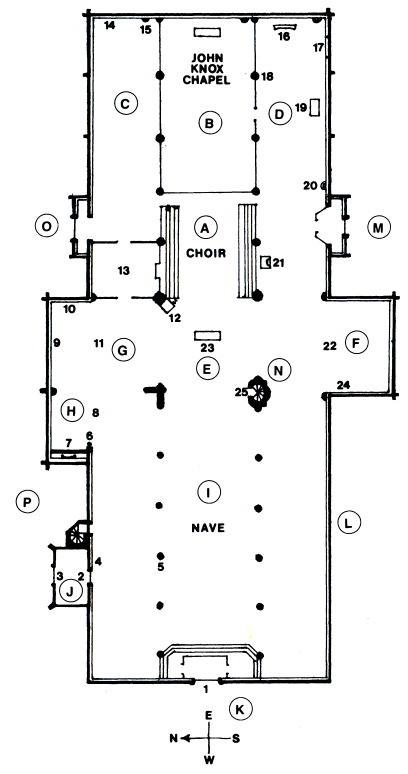
Knox Chapel
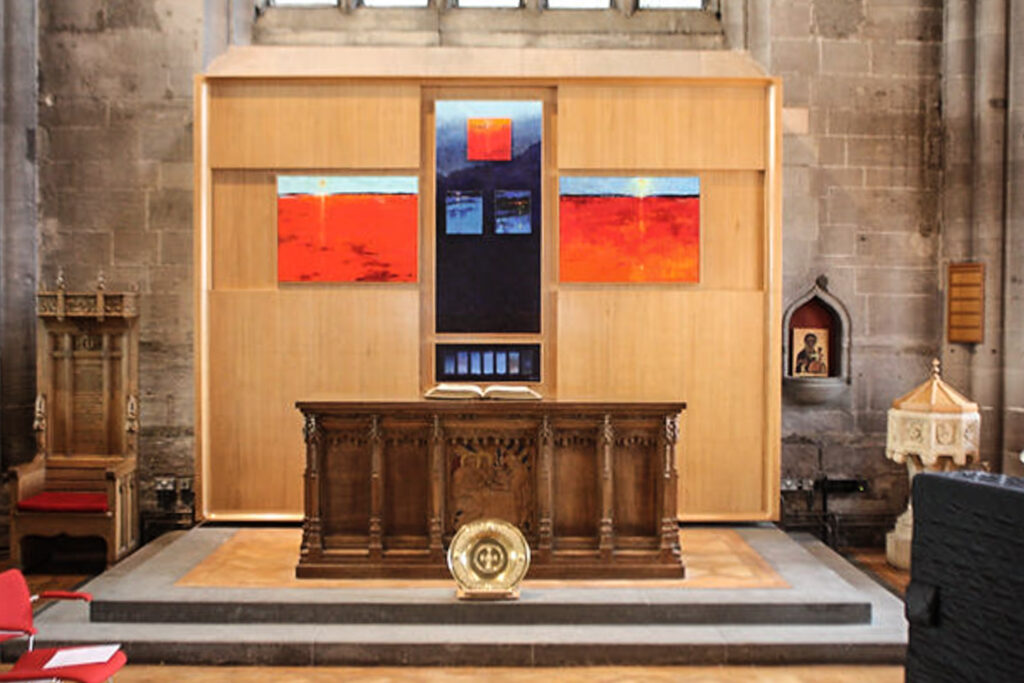
The east end of the Kirk, the site of the High Altar in the pre-Reformation church, has been converted into the Knox Chapel which is used for small services and meetings. The screen separating it from the choir stalls is part of the Lorimer restoration of 1926, while the screens at the side were designed by Schomberg Scott in 1970.
The painting behind the Communion Table is the work by Hugh Murdoch consists of a group of paintings, and like many modern paintings requires some time and effort to understand.
The blue panels beneath the cross represent the seven days of creation seen through the different aspects of the sea and moon. The panels on either side represent the outstretched arms of the crucified Christ. In the centre the two blue panels represent the thieves who were crucified with Christ, while the top painting, seen rising through the darkness into the light, represents the Resurrection.
Choir
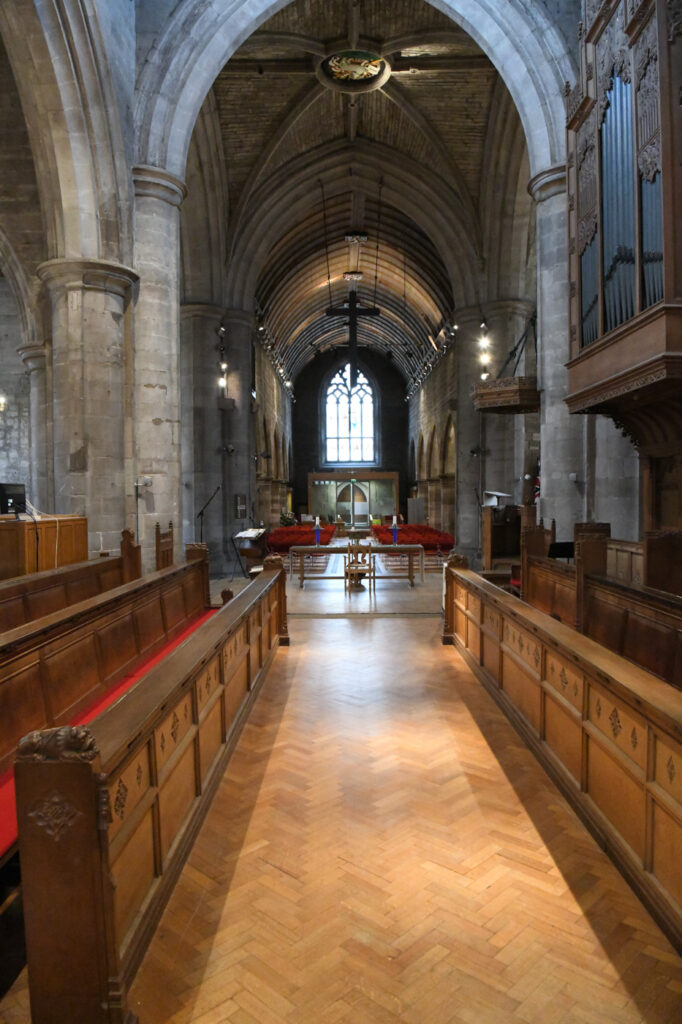
The pre-Reformation choir was divided during the restoration in the 1920s by an open wooden screen, designed by Sir Robert Lorimer. Next to the Sanctuary are the modern choir stalls and the ministers’ pews. Note the carved animals at the ends of the choir stalls.
South Choir Aisle
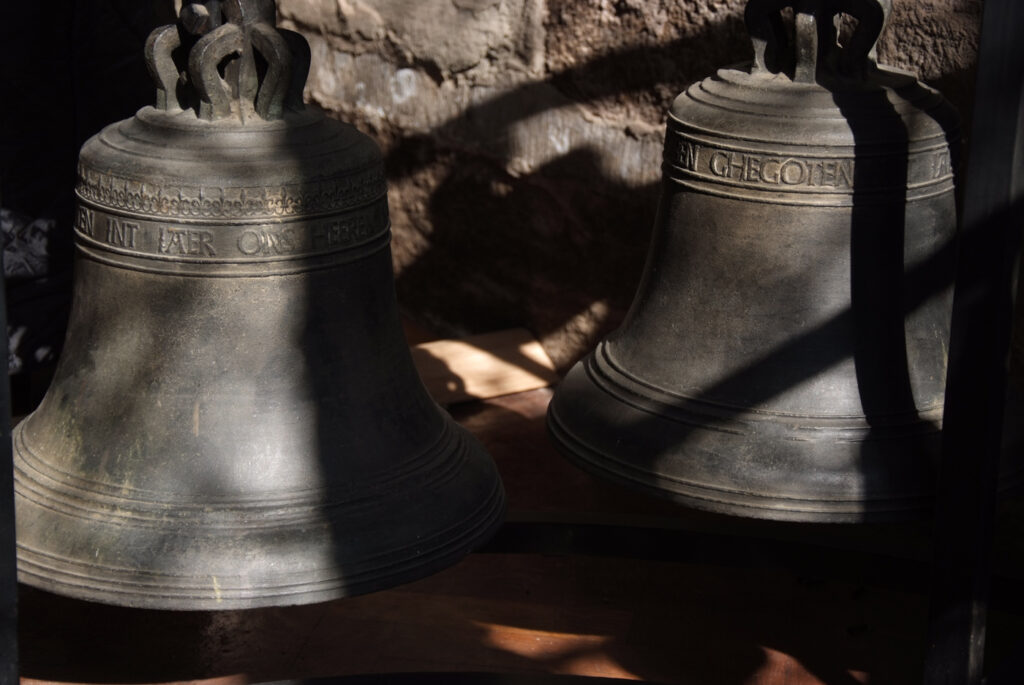
The south choir aisle is home to some of the Kirk's oldest bells as well as an exhibition of important silver cups and communion plates.
Nave
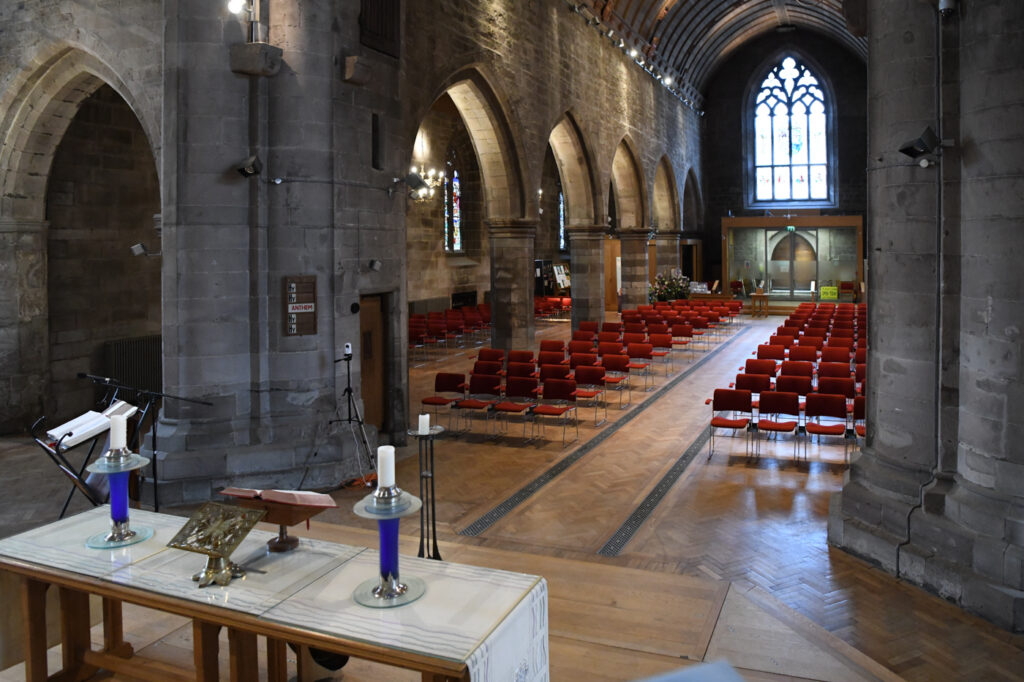
The nave was largely reconstructed by Sir Robert Lorimer in the early 1920s. This included a new fumed oak barrel shaped roof, on which are six painted panels depicting the life of Christ. This panel illustrates the text. ‘Suffer the little Children"
On the wall head of the nave are twelve carved wooden shields, each bearing a sacred symbol beneath a crown. Among them is the Lamb with its staff and banner.
